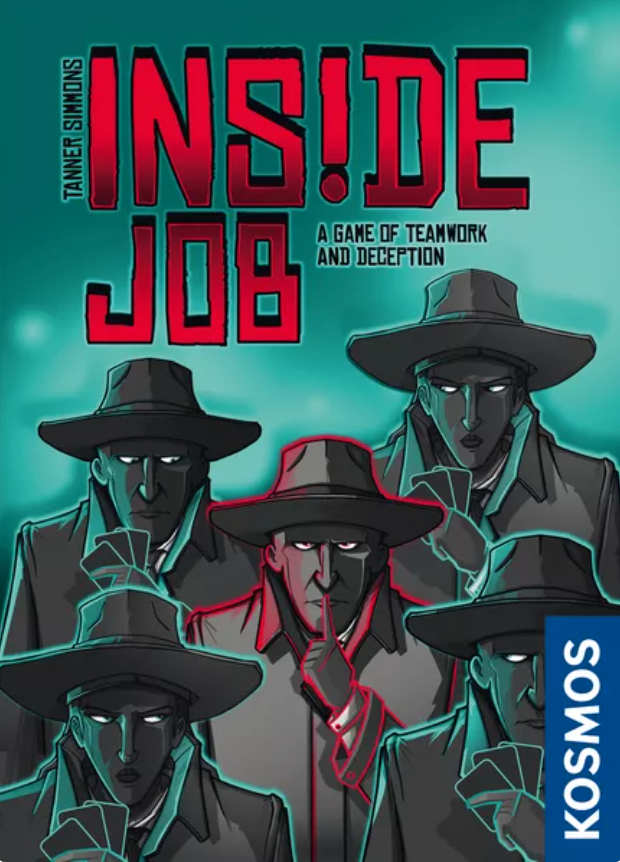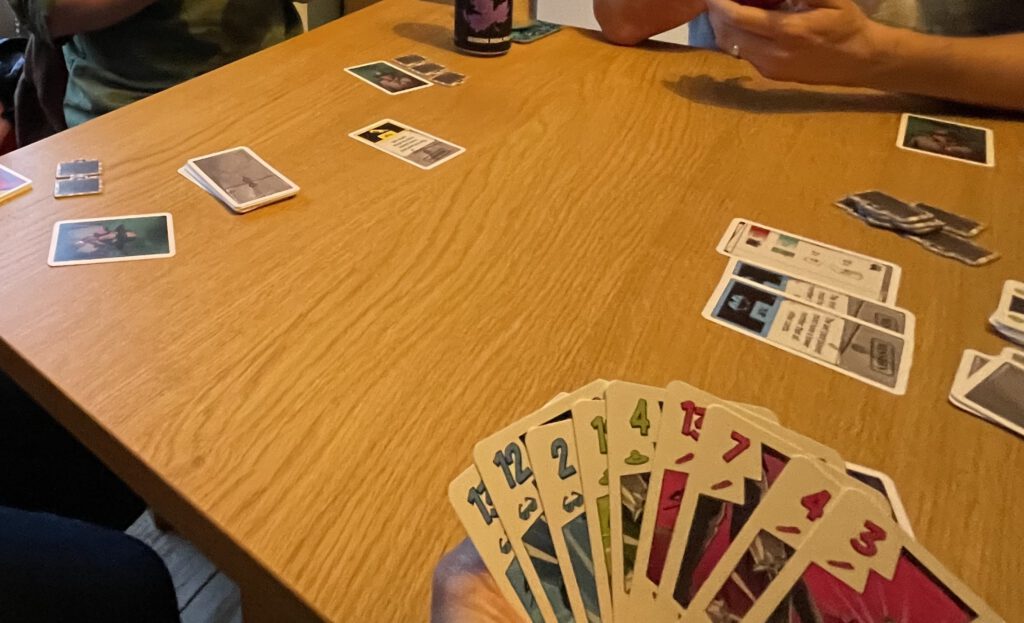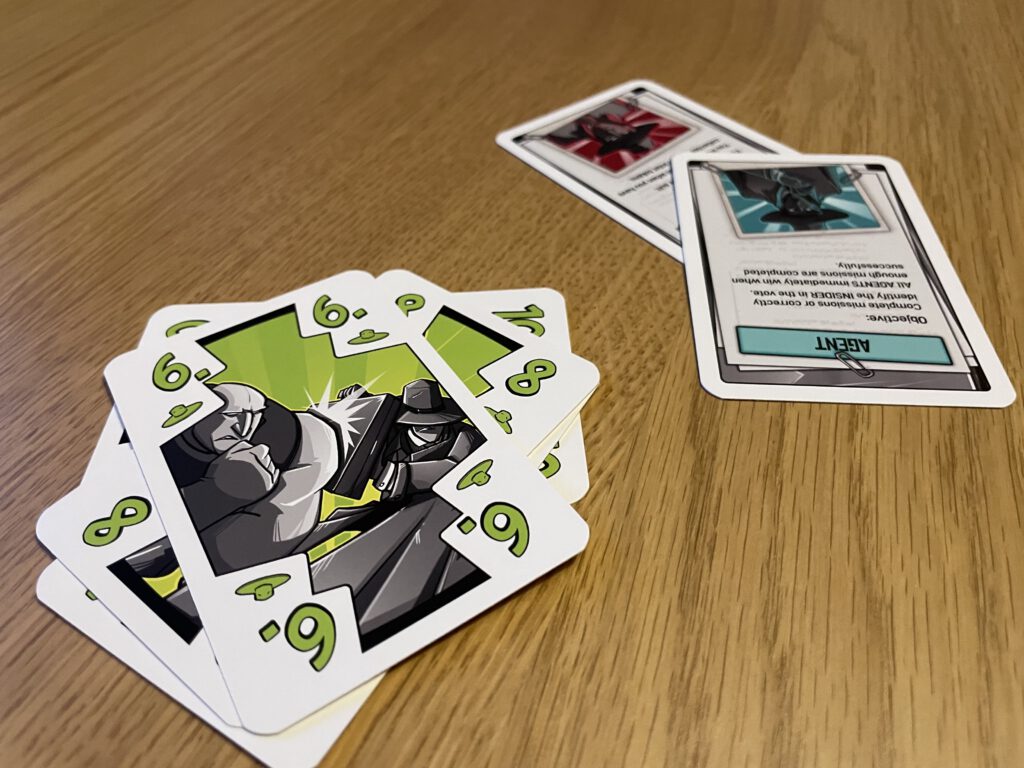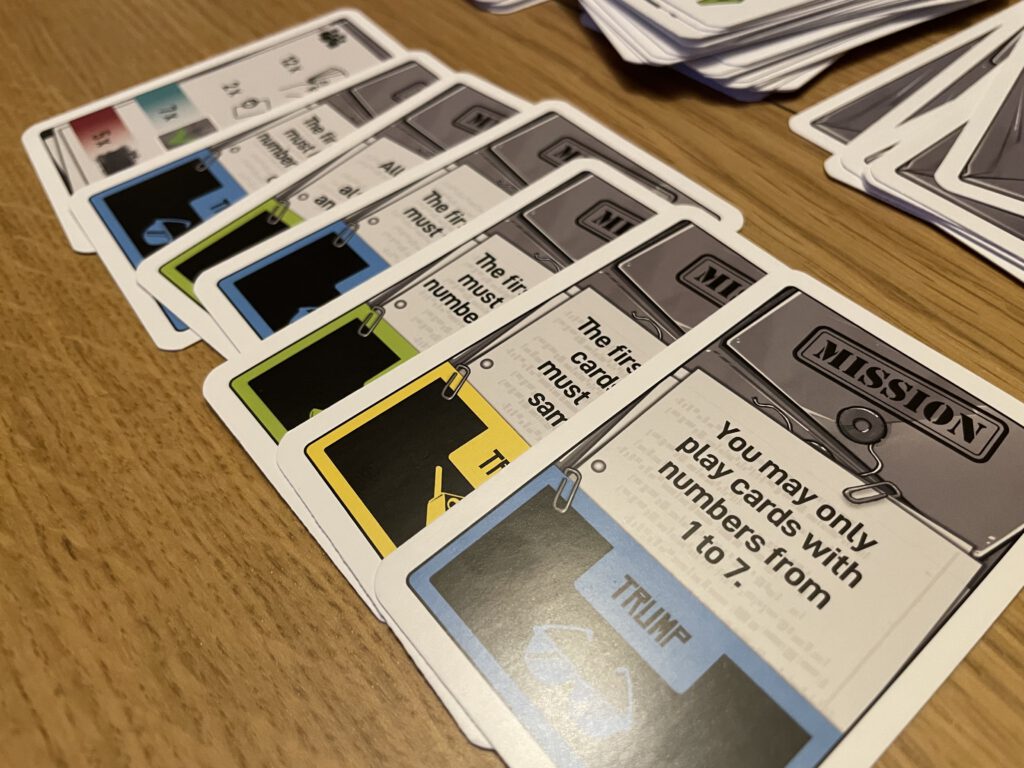Inside Job
Designed by: Tanner Simmons
Inside Job is a trick-taking game. That means, a lá whist and other traditional card games, one player leads a card of a certain suit, and the others follow suit if they can. The highest card wins the ‘trick’ and takes the cards. But with Inside Job, someone may be lying…
Not unlike the celebrated Crew games (Planet 9 and Mission Deep Sea) there’s a co-operative aspect to this undertaking: most players (the agents) are collaborating to try and ensure missions are completed: each trick begins with a mission being announced by whomever won the previous round. Missions are relatively simple: play only odd cards, each card must be lower than the previous one and so on. If everyone is genuinely co-operating, it’d be harder to fail most missions than succeed them. But one player is secretly the Insider. The Insider’s job is to ensure missions fail – or to be more precise, enough missions fail to prevent the agents from winning the game. The Insider can win the game by winning a certain number of tricks themselves, but there is a second win condition which is where the playful opacity of Inside Job is brought to bear. .
If a game ends and neither have the agents completed the necessary missions nor has the Insider won the necessary tricks, then players vote on who the Insider is, all pointing at their own prime suspect. If the Insider isn’t the majority vote, they win! And this very-possible eventuality means the Insider must be careful: if they give away who they are, and then don’t get the required tricks to win, they’ll undoubtedly lose. It’s best to be as enigmatic as possible!
Certain things help you as the Insider. You can play safe and help the agents early on to generate trust, perhaps casting some gentle doubt on others. As winning a trick lets you choose the next mission (from two possibles) and each mission determines the trump suit, you can choose the one that looks hardest – the other one isn’t revealed, But crucially, they can also ignore the follow-suit rule. This is critical to their chances of sabotaging missions, but needs to be managed carefully so as not to give away your true identity.
As well as the basic game described here, Inside Job has a number of variants in the box to spice things up, and mix in a little extra complexity. There’s a two-player variant too.
Sam says
I like trick-taking games and I like deduction, so I had high hopes for Inside Job. I wasn’t disappointed. I don’t think it’s the most beautiful game to look at, but in terms of the playful tension, finger-pointing and occasional surprises it throws up, this is really good fun, a game that successfully hitches a story premise to a classic card mechanic. What we’re doing as agents is nonsensical in terms of theme, but in terms of feeling – tense and pregnant with treachery – Inside Job hits the spot. Breezy play, simple-ish rules, hidden roles, accusations and laughs. Excellent stuff.
-

Take That!
While the Insider is out to sabotage, it's not a game that feels remotely spiteful.
-

Fidget Factor!
Low, once you get the flow of the game. Tricks are speedy and the odd lull on decision-making should generally be a few seconds rather than minutes.
-

Brain Burn!
As the agents, it's pretty straightforward *except* you're trying to figure out who the Insider is. As the Insider, it's harder to feign innocence whilst navigating the trickier role and parameters. But not overwhelmingly so.
-

Again Again!
The basic game is fun to play over and over, but if that's not enough then there's a bunch of things you can add in from the box.




